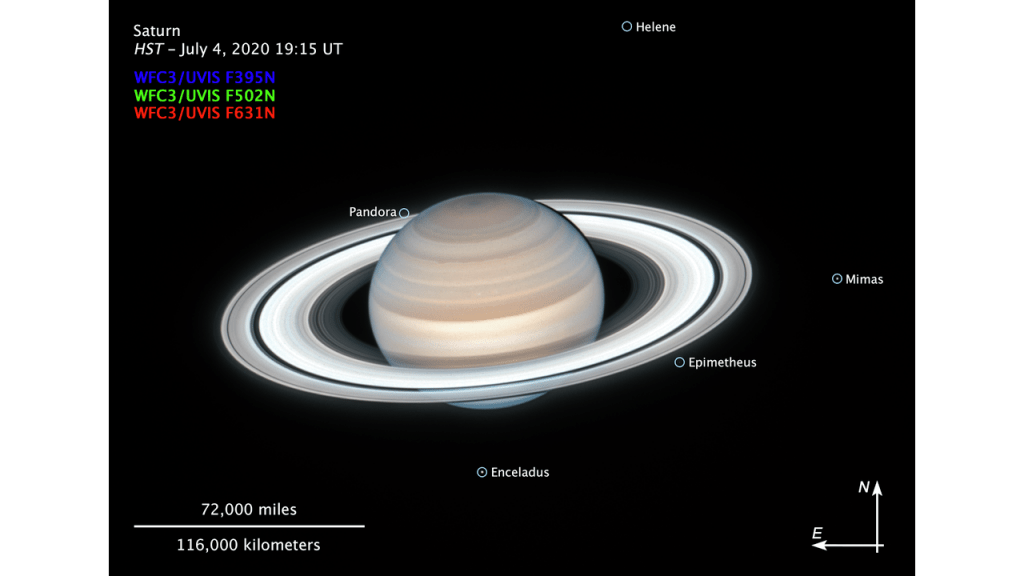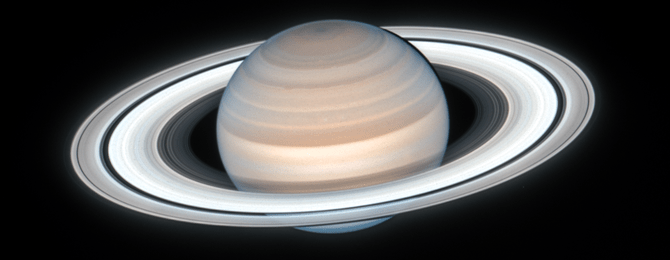If you want an iconic picture of the planet Saturn, it doesn’t get any better than this. The latest picture from the Hubble Space Telescope shows a spectacular view of the ringed giant, taken on July 4, 2020. This shows a “summertime” view of Saturn’s northern hemisphere.
Just like Earth, Saturn is tilted on its axis and so it goes through seasons. In fact, the amount of tilt is approximately the same for both worlds: Earth’s axial tilt is 23.5° and Saturn’s is 26.7°. But years and seasons stretch out much longer on Saturn. A Saturnian year lasts 29.5 Earth years, and summer on Saturn lasts about 8 Earth years.
The current summer season on Saturn began in May of 2017, so any northern hemispherians on the ringed planet still have a lot of summer fun to look forward to. Here on Earth, we’re in the midst of the “dog days” of summer – the hot, sultry part of the summer, named for the time when Sirius, the Dog Star, rises at the same time as the Sun (usually about July 3 to August 11), “a period marked by lethargy, inactivity, or indolence.”
But, back to Saturn….

When Saturn is tilted like this, we can get a great view of the planet’s stunning rings. The rings are visible even through a small telescope. For me, seeing Saturn through a telescope is what got me hooked on observing.
Hubble’s image shows multiple banded cloud activity, due to the warming in by direct summer sunlight. Also visible are a number of small atmospheric storms, which are seasonal transient features that astronomers and atmospheric enthusiasts love to monitor, tracking shifting weather patterns and storms.
NASA noted that the banding and storms remain pronounced as seen in Hubble’s 2019 observations, with several bands slightly changing color from year to year. Saturn’s atmosphere is mostly hydrogen and helium with traces of ammonia, methane, water vapor, and hydrocarbons that give it a yellowish-brown color.

You also may notice a slight reddish haze over the northern hemisphere. Amy Simon of NASA’s Goddard Space Flight Center in Greenbelt, Maryland says this may be due to heating from increased sunlight, which could either change the atmospheric circulation, or perhaps it remove ices from aerosols in the atmosphere. Another theory is that the increased sunlight in the summer months is changing the amounts of photochemical haze produced.
“It’s amazing that even over a few years, we’re seeing seasonal changes on Saturn,” said Simon.
This image is taken when Saturn was 839 million miles from Earth, as part of the Outer Planets Atmospheres Legacy (OPAL) project. OPAL is helping scientists understand the atmospheric dynamics and evolution of our solar system’s gas giant planets.
For additional info on this image and on the Hubble Space Telescope, visit NASA’s HubbleSite.
